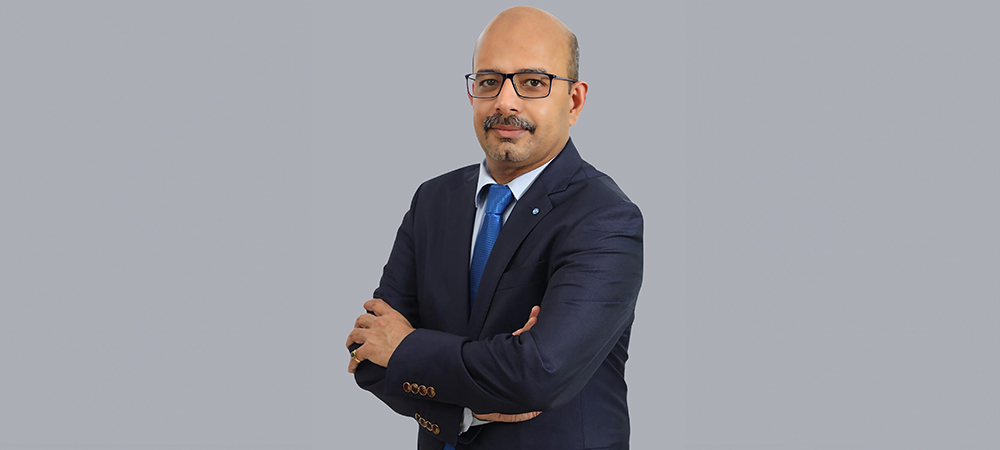IT architecture should be a living document that is evolving as business objectives and demands change and is influenced by internal and external change ranging from product offerings, administration, financial, local regulations, with the customer being primary stakeholder.
Zurich International Life is part of Zurich Insurance Group, a leading multi-line insurer founded 150 years ago. Present in the Middle East for 36 years, the insurer has developed a deep understanding of the needs of people and businesses in the region, providing a range of market-driven life insurance, savings, and employee benefits solutions.
Zurich International’s ultimate aim is to empower customers to be ready for life inspiring confidence, helping them to fulfil their protection and savings needs, creating a brighter future together.
Role of IT
Over the past few years, the term digital transformation has become increasingly popular. It refers to the process of improving digital touchpoints to make them world-class, seamless, effective and to be able to get things done at a faster pace.
While this mostly applies to customers, this also extends to internal and external stakeholders like partners, IFAs, distributors, and various other entities.
RPA is used to support reporting, while bots manage basic customer needs. SaaS is mainly used to support sales and distribution, but there is a strong desire to develop more intellectual property within the organisation.
In this post-pandemic world, IT best practices are constantly evolving in response to new factors. External ones like industry trends and changes in market demographics, or internal factors like changes to an organisation’s vision, goals, and objectives. The focus is always on the end customer while being accountable to stakeholders.
IT is now a disrupting force and a strategic driver. It is being seen as a powerful transformational force within an organisation, redefining standards and benchmarks.
Today’s IT best practices are determined by agility, entrepreneurial mindset, discipline, and redefined financial commitment. IT is also co-owning customer commitment while maintaining a healthy security posture that complies with all relevant regulations.
To be effective, an IT function needs to have a strong grasp of the business objectives, a basic understanding of the products and offerings, domain expertise, functional knowledge and the ability to apply complex technology to daily operations.
“We are cautiously embracing emerging technologies like AI and Chat GPT, while being mindful of potential risks. We are ensuring we have the frameworks, governance and operating models in place, alongside ethics and procedures in order to use AI and Chat GPT safely.
“You can have too much of a good thing, which is why it is important for us to carefully consider our risk appetite when aligning with industry standards and trends,” says Ramakrishnann.


Pain points
The insurance industry is complex and subject to heavy regulatory and compliance monitoring like any other financial sector. Additionally, the architecture is built on a combination of legacy systems, middleware and state-of-the-art front-end and customer touchpoints.
With customer expectations of solutions and services being delivered quickly with the utmost quality, the pressure is on IT to strike a balance between agility, meeting standards and frameworks, effective quality assurance, seamless customer experience and ensuring a stable security posture.
Today the industry is lacking skilled resources with deep domain knowledge and technical expertise who understand and can build the end-to-end journey.
IT architecture
Insurance companies typically have a core administrative system that is integrated with a host of peripherals. These typically cover the processes of fact finding, need analysis, new business, underwriting, customer servicing and claims. The peripherals also consist of systems that support HR, finance, assurance and administrative functions.
A common aspect of all insurance infrastructure is the state-of-the-art technology on-premises but with the majority of systems being hosted on the cloud.
The most important aspect of managing an effective business intelligence function is decision making and analysis.
“Breaking it down simply, the architecture revolves around a core policy administrative system that is surrounded by a host of peripherals. You will find a variety of core systems across insurance segments ranging from Ingenium, Life 400, TCS Bancs, Guidewire to in-house administrative systems built by the organisation.
“Many organisations are trending towards creating their own intellectual property,” says Ramessh Ramakrishnann, Chief Information Officer, Zurich International Life.
Effectiveness requires continuous updating to stay relevant to business needs and being aligned with the organisation’s vision. Speed to market, effectively evolving reusable components, quality assurance using industry-standard tools to address functional and non-functional aspects, ensuring security posture with data, and providing agile and efficient support in all aspects of the process. This can be achieved through the adoption of various frameworks and implementation methodologies.
“Establishing an effective architecture is crucial to Zurich. Architecture is the spine of our organisation, and it is not just technical. It is extremely important to establish a business process flow architecture that gives a bird’s eye view from end-to-end,” adds Ramakrishnann.
The architecture should be a living document that is constantly evolving as the business objectives and demands change. It is also heavily influenced by internal and external change ranging from innovative product offerings, administration, financial aspects, and local regulations, the customer being the primary stakeholder.
The business process flow architecture needs to be complimented by a technical architecture that pushes relevant teams and stakeholders to be practical in their thought process and analysis, while understanding the complexities involved in developing and maintaining the core and peripheral systems to industry standards.
“Collaborating with the business and assurance functions is crucial when integrating new technology. We refuse to compromise on our long term security posture, data security or sustainability,” indicates Ramakrishnann.



